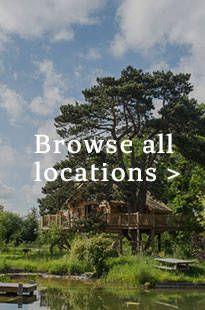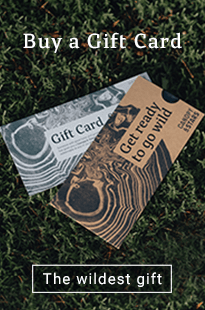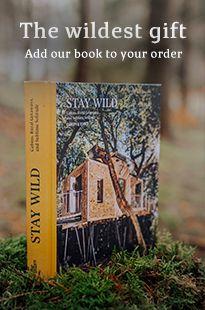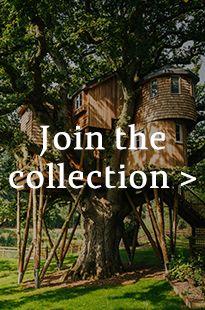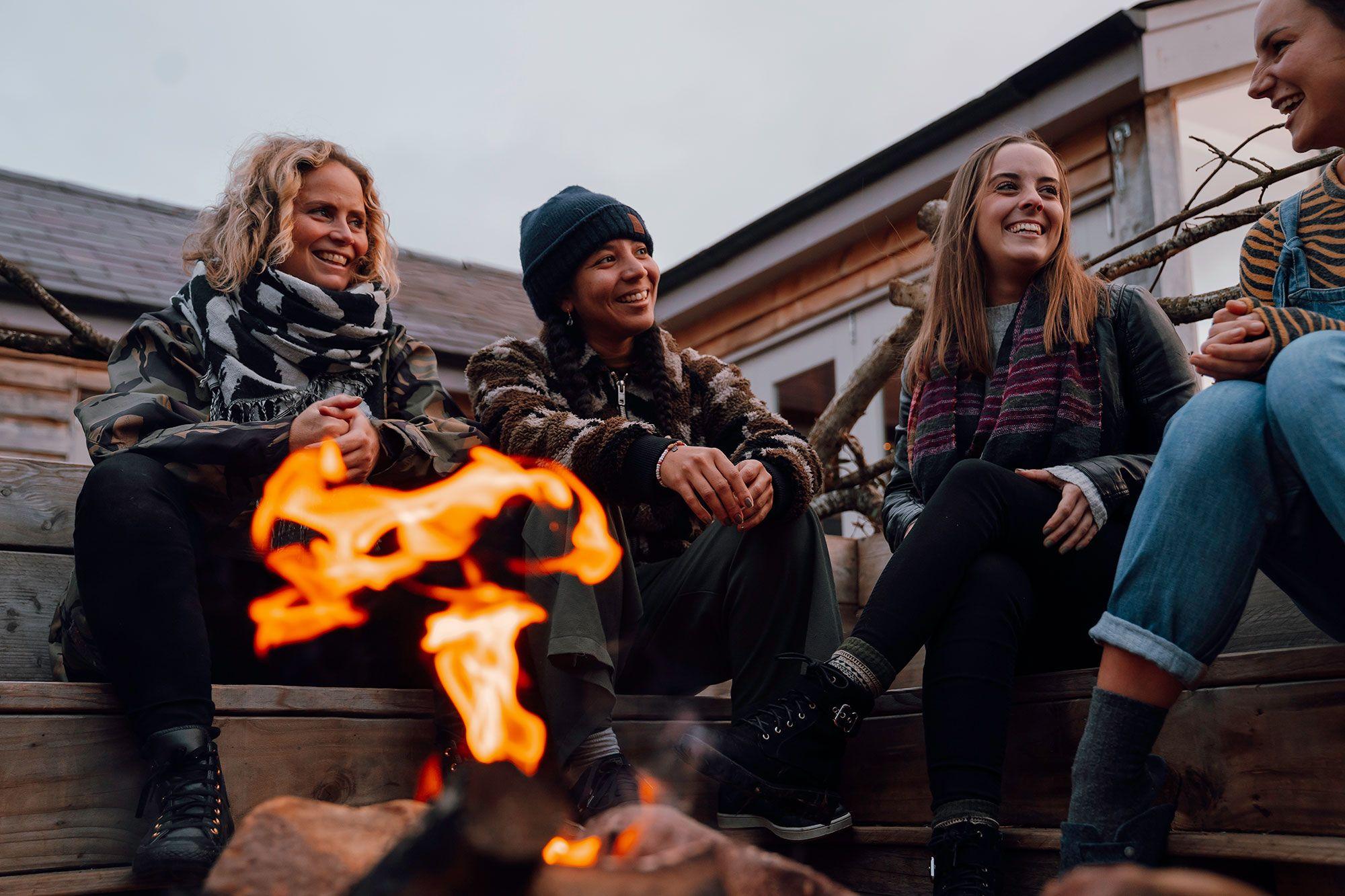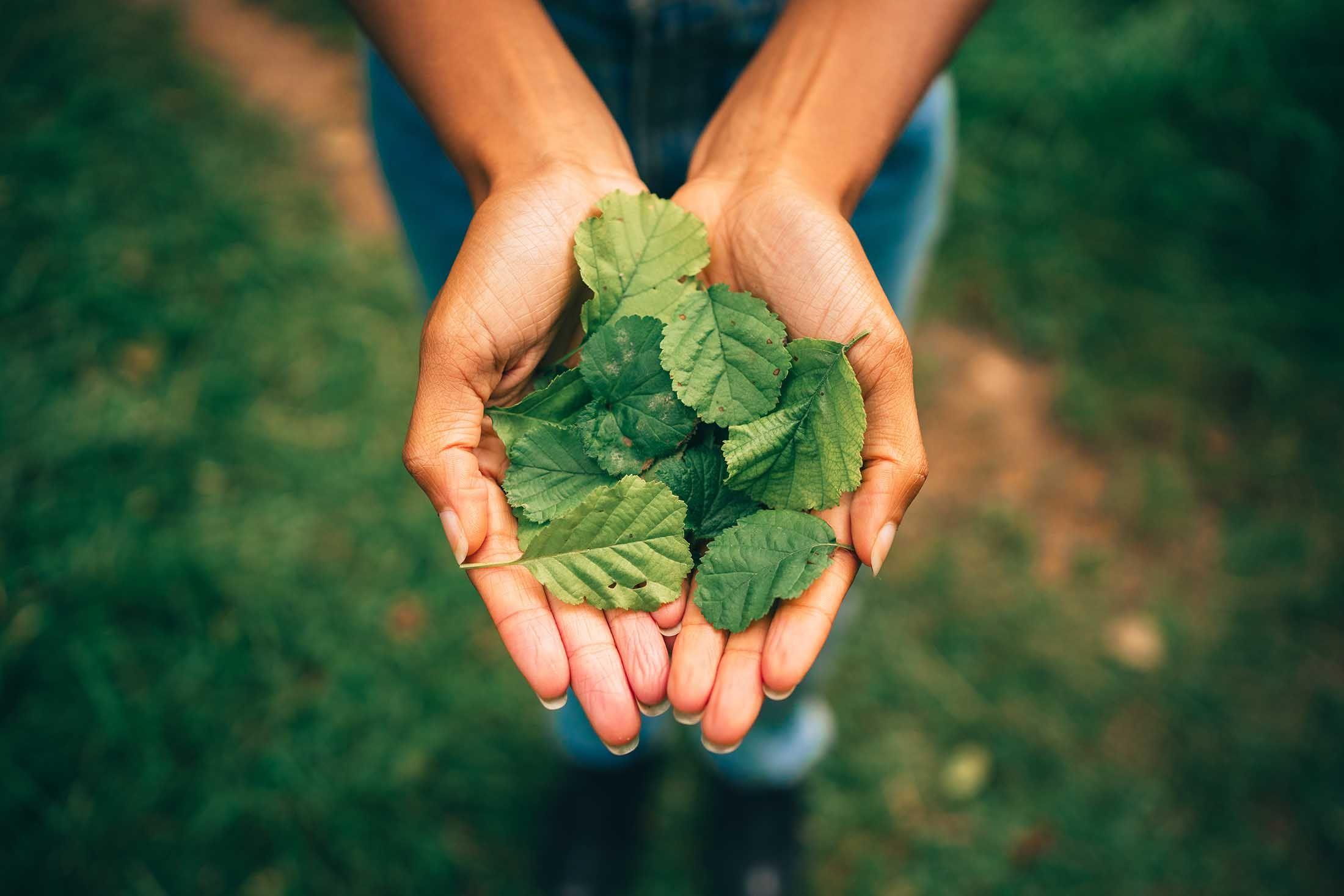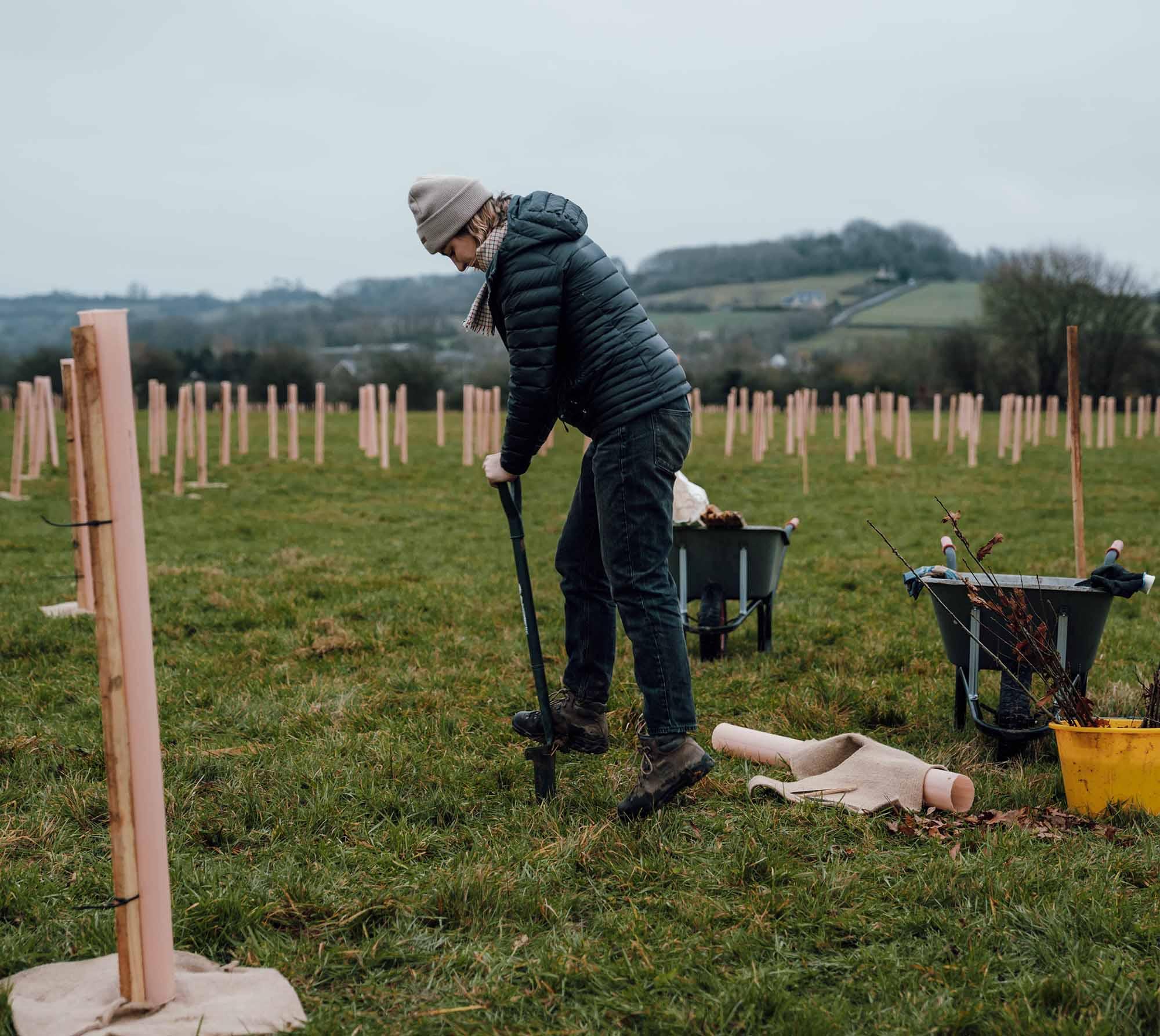
A Life More Wild - Series 4 Episode 1
Alastair Humphreys
Alastair Humphreys on building adventure into your life wherever you live
Alastair Humphreys spent four years cycling around the world. He's rowed across the Atlantic, run a marathon in the Sahara, and taken part in an expedition to the Arctic. So why is he now wandering around an overgrown industrial estate?
Actually, this came to be one of my favourite places, I thought I was going to really enjoy the traditionally beautiful bits of my map, you know, the woodlands or the hills, but actually, it's places like this that I came to really enjoy the most, it’s sort of forgotten, neglected, edgeland, marshland. We’re completely surrounded by pylons, and factories and ugliness. But also, if you flip the way you look at it. We're also surrounded by marshland, and rewilding old industrial bits and nature coming back again. And there's aeroplanes buzzing around, the winds blasting away, but it feels to me quite peaceful here and wild, and that I've got this landscape to myself and I really like it.
I'm Chris from Canopy & Stars and this is A Life More Wild. Join Alastair now as he talks about how much there is to be found in your local area, and how microadventures can change your life.
Chiff, chaff, chiff chaff, chiff chaff – spent an entire life saying chiff chaff chiff, chaff.
Nice to be introduced by the chiff chaff there. My name’s Alistair Humphreys. I'm an adventurer, book writer, stuff like that. And we've met today just outside the city, in a sort of apocalyptic-looking industrial estate, not particularly Scenic. We're standing in a little car park thing with some big cement lorries rumbling past us, every couple of minutes. Behind this, there's a very, very, very tall factory chill chimney with some sort of complicated looking, but very rusted pipe sticking out of them, I've got no idea what they are. And I really like places like this, there’s industry and stuff happening, and I have no idea what any of it is. There's a chain link fences, there's a lot of rubbish lying around. Bits of plastic – the signpost for the car park has been smashed. But it's also a beautiful sunny day and beyond the pylons and the wires, we can see some bushes and some wild scrub and hopefully a bit of wildness.
My beginnings of adventuring and exploring started with doing really big stuff and actually deliberately trying to do the biggest possible stuff that I could possibly do. So, I started by spending four years cycling around the world, which seems to be about, literally the biggest adventure I could ever do. And, and that then encouraged me to do other big journeys, like rowing across the Atlantic Ocean and walking across Southern India and trekking across the Empty Quarter desert and crossing Iceland and an expedition up in Greenland. So, all sorts of fairly typical, big expeditions trying to be a sort of tough guy adventure, explorer bloke. And then and that's all brilliant for all the reasons people like those sorts of things. But I started to then move towards thinking about why we love adventures. And I think loads of people love them. But not many people can actually do stuff like that, because of real life. Time money, commitments, all these sorts of real-life stuff. So, I started then thinking about how I could get the kicks that I enjoyed out of being in these big wild places and find those things closer to home. So, trying to do short, simple, nearby, not very complicated adventures. And I call these micro adventures. I wanted to try and suggest that it didn't matter how small your adventure was. If it felt adventure to you. Then that's great. It's better than it's better to do a tiny bit of adventure, than no adventures.
I think most good adventures begin with a map. You get a map out and you look at it and you start daydreaming of travels. And that applies whether it's looking at a globe or a, or a map of your country or just the Ordnance Survey map if you're gonna go hiking in the, in the hills somewhere, so I really like maps. And so that was a that was a, I suppose a part of it. But there was also this thought, feeling that I've spent literally years in other countries cycling thousands of miles across landscapes. And yet when I drive to the shops, there's a little bit of woodland that I see that never been into, or when I get the commuter train into the city, you go past some sort of hill or neglected bit of land I'd never been to before. So, how can I think of myself as a so called ‘explorer’, if I didn't even know what was in my neighbourhood. So, I was kind of curious about that.
So, the map’s divided up into one kilometre grid squares. And I had the idea that if I went out once a week, that's not too much of a commitment to explore one grid square, that's not too much of a hassle. And to do it every single week for a year, then over the course of the year, I'd see quite a lot of where I lived. And also, I'd see it through all the rolling seasons and changes of the year. And that might help me, pay a bit more attention to the, the universe, rather than me just sitting at home sending emails all day.
I also wanted to test out this idea that was growing in my mind that, it didn't really matter where you went for an adventure, you know, whether I've been to a hot desert, or a cold ice capillary, wet ocean, it's always been about similar sorts of experiences and feelings. So maybe the landscape doesn't matter. In that case, maybe you can have an adventure anywhere. So, I thought I'd test this out by doing what sounded very stupid, of walking a lap of the M25 motorway, which was a ridiculous thing to do, but was surprisingly tough, surprisingly interesting and surprisingly, wild and beautiful.
And I realised that my sort of preconceptions of ‘M25 – all built up. Can't be an adventure there. All rubbish’. Was completely wrong, and between all of these built-up places, and the towns – Slough, Rickmansworth, all of these commuter sorts of towns, in between all of those were tiny little pockets of nature and wildness and woodland and places where I could camp at night. And it really did feel like an adventure. Not a big adventure, of course, but a micro adventure and doing that. Got me really thinking, “yeah, there is something in this idea there is the possibility of finding adventure, closer to home”.
Right, we're out now, away from the factory, into the marshland. And when I first discovered this, when I was exploring my local area, I just thought it's fantastic. It's sort of, slightly scrubby, a bit rundown, it's not going to win any sorts of beauty prizes. It's also tall, blonde, grass and scrubby little Hawthorn trees and patches of bushes dotted everywhere by gigantic pylons. But I really like it here. It feels really peaceful sort of somehow, and kind of wild and there's never really anyone around here so it feels like you get a sense of solitude that I hadn't really expected in such a busy corner the world.
So, we're walking towards now, a gigantic pylon. And I have to say this is possibly my favourite electricity pylon. When I was doing this book, one of the aspects of it was, I'd write loads of notes, and then I'd go home and Google them all. So, I did at least as much internet exploring as real world exploring, and I learnt whilst looking up pylons at home, that there is a ‘Pylon Appreciation Society’, which you can pay to join up. And I'm pretty sure those guys would very much like this one. It's enormous. It kinda looks like the Eiffel Tower in sort of scale and shape. It's very beautiful, I think in a brutalist impressive sort of way. And it's a good place for peregrine falcons to perch and hide as well.
This project was really good for challenging my preconceptions and ideas. And one thing I've really tried to do over the last 20 years or so of adventuring, is to ask myself regularly, what does adventure mean to me now and to and to try and allow myself to evolve with those sorts of thoughts. So, when I started, I don't… As I've said before, I didn't really like where I lived. So, I went out with a bit of a negative attitude of ‘this area's sucks. And I'm gonna go out and just prove how much it sucks and that I should go and live in California’. So, it challenged me in that way. When I started thinking, actually, it’s really interesting. It's not traditionally beautiful, but it is interesting.
So, I came to appreciate that side of things. It very, very much challenged my preconceptions of England's green and pleasant land, I grew up really enjoying. And I love England's countryside. But the more you pay attention to it, the more you realise that that green pleasant landscape, is very much often a green desert, we've wrecked our natural world, we've got one of the worst countries in the world for biodiversity, and those rolling green hills are kind of green deserts a lot of the time. So, I found that quite challenging. And actually, you probably find a lot more nature here in this sort of abandoned industrial landscape that's growing back, than you will in a more. traditionally bucolic. so called pretty countryside.
So, we've now passed beyond the gigantic pylon, to what was possibly my favourite discovery of my entire map, somewhere that, even though I've lived around here for 14 years, I’d no idea existed. And this place is seriously weird. It's like, a sort of forgotten shack land that reminds me of like, we're in Louisiana, or Haiti or something like that. There's all these sort of shacks built up out of driftwood and pallet wood and junk, and it's all feeding a creek where there are, it's a muddy, dried up creek most of the time, but there are all sorts of boats in various stages of falling apart, with holes in, in disrepair. And it's just seems bizarre to me, but it's absolutely fascinating, you can see a kestrel hovering up there! Just over it, doing a good job to stay so still in this wind. So, I love it here. Yeah, there's this funny little shacks. There's obviously some sort of community of people who maybe come, I don't know if they come at the weekends or few people live here, I've never seen anyone down here. And all sorts of abandoned rotting and falling apart boats I find it weirdly photogenic.
So, one of the things you can hear now above the wind, just over where the kestrel is, is the halliards on the sailing boats, the wires clanking against the mast clank clank, clank, which makes me feel like I'm down by the sea, about to go off in some big nautical adventure. But the clanking away, it’s such a nice sound of the sea that.
So, I think you could, I really think you could do what I've done anywhere in the country. In fact, actually anywhere in the whole world. I did an interview with some, an American podcast, and they were, and essentially, we sort of talked about all the place had been, and then the end they said, “Yep, that's, that's great, because where you live is really interesting. I mean, imagine if you lived in the middle of Iowa. It'd be so boring. there'd be nothing you could see there”. And my answer was, “wow, I'd love to go to Iowa. I've never been dump me in the middle of those giant prairie cornfields right now. I'd be fascinated”. So, it really is equally interesting wherever you do it. And I think everyone who explored their map would find different things. So, I've, I'm really interested in the nature and the wildness on my map, but someone else exploring their map might be really interested in the churches or the architecture or the, the Ethiopian cafés or whatever. So, I think that then reflects on who you are, and also on whether you choose to do it by yourself or with your kids, or with your partner with your mates or, or a different random person each week who could teach you about their specialities. So, I think all of that would be up for grabs. But where I think would be interesting, gosh, I think anyway would be interesting. It's what would really fascinate would be, would be different people taking their own take on a place. So, someone looking at the world, with very different eyes to mine, I think that would fascinate me more than the geography of where they were.
What have I enjoyed? So, we heard at the start, we heard the tiny little local chiff chaff. And if you see a chiff chaff, it's a really anonymous, uninteresting little brown bird. And the only noise it makes for its entire life is going to be chiff chaff, which isn't going to win any ‘Bird Song of the Year’ awards. So, in that sense, it's fairly unremarkable, which is probably why I've never noticed it in 40 years of life. But once I then learn the name of it, and I started to google it, I realised that it's this tiny little thing, weighs about as much as a 20p piece. And it migrates to England every year from Africa. So, when you start to hear it, roundabout March, April, time, it’s flown all the way from Africa, which is completely nuts. That's a hardcore expedition. And it's one of the early birds to arrive in the spring. So, when you first hear chiff chaff chiff chaff, it means that springs on the way, and that's cool.
This year has very much challenged my opinions of wildness, and it's also made me make a distinction between wilderness and wildness. So, this year, I don't think I've discovered or seen any wilderness. It's not, it's not the middle of Alaska, but it does feel wild to me. And I really appreciate now that, if you just, there’s a saying of ‘do nothing for nature’, I.e. do absolutely nothing, and nature will be fine. It'll come back and fix itself and make places wild again. So, I love the notion of rewilding that that's quite popular at the moment. But you often think that has being sort of beautiful landscapes and beautiful trees and things. But I quite like this more aggressive, semi-industrial, apocalyptic rewilding of the brambles coming around the shopping trolleys, and the old plastic bottles getting wrapped up by bracken and gradually biodegrading over a thousand years when we're all long gone. So yeah, really, I really liked this sort of urban wilding.
I think if I was recommending people to go microadventures, I'd say a few things. One is, make the effort to go and do it. Ten years from now, you're not going to look back in your life and think, “Ah, I wish I hadn't done that microadventure, I wish I'd say that home sending more emails”. And so therefore, I think you need to schedule it into your calendar and make it happen because otherwise, life's, life's what happens while you're busy making other plans. Isn’t it? It’s that you don't get around to getting out and doing these things. And then I, then I think it's really important to look at what it is that stopping you, what's getting in the way, is it a lack of time? Is it lack of money? Is it that you think you live somewhere boring and not adventures? What is it that getting in the way, and then try and find an option that is really small, but compatible with your personal barriers, to make it smaller and smaller and smaller, until there's no reason not to go and do it. And then you can step out and do that microadventure. You’ll think, “Wow, that was great. And it wasn't as much hassle as I thought. And that's given me ideas for other things”. And then you start to get confidence and momentum to go do more little adventures. So, I think that's the key. Just getting started with something really, really small. And then for anyone who's curious about exploring their local map, I think it's really important to not assume that you need to live in a so called wild and beautiful place, to find wild and beautiful things. When I started exploring my map, and I knew I was going to try to write a book about it. I was kind of worried because, where I live is a bit sort of boring and suburban. And I thought, “Oh, this would be much more interesting if I lived in the wilds of Scotland or the Lake District or something”. But actually, after a year, exploring my map, I think a year exploring the Highlands of Scotland would have been great. But I don't think would have been as interesting, it would have been more wild, more wild, more beautiful, more exciting, maybe. But I don't think it would have been more interesting. So, I think everyone's map wherever you live, is equally valid for exploration, and the curiosity and enthusiasm with which you explore. So, the mindset of your adventuring, is far more important than the actual geography of the places that you go.
If I had to try and encourage someone to live a more adventurous life, I think I'd probably come at it from two totally opposing directions. One would be to start saving up now and working out how at some point in your life, you can carve out a chunk of time to go cycle, cycle across a continent or something big like that out in the world. But I'd also suggest that, until that adventure of a lifetime comes, then I would use your lunch break today to go out of your office and turn left instead of right and find a different sandwich shop down the road, and go and eat it in a different part you've never been to before. Maybe climb a tree in that park and start to just be curious and exploring close to home – and do that today.
So, there you go. Start small with whatever fits your life right now and who knows where you could end up – the Sahara, the Arctic even an industrial estate. Next time, we'll be walking in the wetlands with the equally inspirational Lira Valencia, whose infectious enthusiasm for everything from birds to beetles, as well as painting snails, helped her defy her lack of representation to make the natural world her life and work.
See more of what Alastair’s been up to or follow us on Instagram to see us out about working on the podcast and discovering great new places.
A Life More Wild is an 18Sixty production, brought to you by Canopy & Stars. Production by Clarissa Maycock. Our theme music is by Billie Marten.

